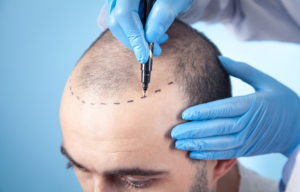Bad Breath/Halitosis Treatment – Procedure, Aftercare and More
4 min read
The medical term for bad breath is halitosis. Everybody occasionally has foul breath, especially after eating foods like garlic, onions, or other pungent flavours. However, persistent foul breath (chronic halitosis) may indicate that you have a problem with your oral health or an illness that is impacting another portion of your body.
Halitosis is a sign of several medical problems. To put it another way, it resembles a warning signal from your body. The first step in treating halitosis is determining its underlying cause. For that, you should search for a ‘halitosis specialist near me’ and get an appointment with a dentist near you.
The Treatment Procedure
The dentist will attempt to assess the severity of your issue on a scale of six-point intensity at your initial visit as the first stage in your treatment. He or she will scrape the tongue’s back in order to determine the severity of the issue by analysing the scrapings. The strength of the odour may be measured by a few different detectors. These include gas chromatography, beta-galactosidase testing, the halimeter, and the BANA test.
The dentist should be seen at least twice a year, as per the doctor’s likely prescription. Additionally, if you haven’t already, he or she will advise you to switch to toothpaste or mouthwash that has antibacterial characteristics.
It may be preferable to seek the assistance of your dentist if you have gum disease, such as an infection, so that they may clear the area between your gums and your teeth of bacterial build-up.
If the supervising dentist finds evidence of gum infection, you can be recommended to see a periodontist or other gum expert. Your gums will pull away from the teeth as a result of gum disease. As a result, the mouth will develop deep crevices that will eventually become bacterially filled. Gum odour arises as a result of these microorganisms.
We hope this detailed information about the procedure has cleared up your confusion about the treatment. Now, Google ‘halitosis doctor near me’ to find the best dentist for the job.
Aftercare
After you have gotten halitosis treatment, you should follow the following restriction along with the dentist’s advice.
Brushing:
Be sure to brush your teeth frequently, ideally after each meal.
Floss:
Flossing helps prevent the accumulation of plaque between teeth, whereas brushing only removes roughly 60% of the tooth’s surface. As a result, frequent flossing is also necessary.
Brush Your Tongue:
Especially among smokers and those with dry mouths, food, dead cells, and germs frequently accumulate on the tongue. It may be beneficial to brush your tongue or use a tongue scraper.
Diet:
It is recommended to stay away from foods like onions, spices, and garlic if you have foul breath. Additionally, it is advised to consume less alcohol, coffee, and sugary meals. Rough foods can help clean the back of the tongue, especially when eaten during the morning.
What Causes Bad Breath?
The most frequent cause of halitosis is inadequate dental hygiene, but it’s not the only one. Other circumstances that might result in foul breath include:
Dry mouth:
Saliva helps to wash your mouth, but if your body isn’t producing enough of it, it might cause dry mouth, which can result in halitosis. In addition to raising your risk for gum disease, smoking can result in a dry mouth. A dry mouth can also be brought on by several drugs.
Head and neck cancers:
If you have an oropharynx, which is the area between your nose and mouth, you may have mouth sores that don’t heal, mouth discomfort, trouble swallowing, a lump in your neck, and unexplained weight loss.
GERD:
The digestive ailment known as gastroesophageal reflux disease (GERD) is characterised by the leakage of stomach acid or other liquids into the oesophagus, which is the tube that carries food from the mouth to the stomach.
Tonsil stones:
When food becomes lodged in the tonsils, which are located in the back of the throat, it can occasionally solidify into calcium deposits known as tonsil stones or tonsilloliths.
Gum disease:
Gingivitis is a gum irritation that can result in redness, swelling, and bleeding. It is brought on by plaque, a clingy film that forms on your teeth and is easily eliminated with brushing and flossing. Gingivitis that is left untreated can develop into periodontitis, which harms the gums and can result in the loss of teeth and surrounding bone.
Intense pain, bleeding, fever, and exhaustion are common symptoms of trench mouth, an advanced type of gum disease. Due to its prevalence among World War I troops stationed in the trenches, the condition is known as “trench mouth”. Make sure you have searched for a ‘halitosis treatment center near me’ as soon as finding out about this dental issue.
Infections of the nose, throat, or lungs:
People who have pneumonia, for instance, cough up foul-smelling fluid.
Diabetes:
Gum disease is more prevalent among diabetics, and since gum disease can raise blood sugar levels, it can make managing diabetes more difficult.
Liver or kidney disease:
Toxins are removed from your body by your kidneys and liver when they’re functioning correctly. These harmful compounds, however, aren’t being eliminated in those with liver or renal problems. Halitosis may be the outcome.
Sjögren’s Syndrome:
Pain in the muscles, dry eyes, dry skin, and dry mouth can all be symptoms of this autoimmune condition (which is often linked to halitosis).
Conclusion:
The good news is that addressing the underlying medical condition typically helps in getting rid of halitosis. To determine what is most beneficial for you, your dentist and primary care doctor can collaborate.






